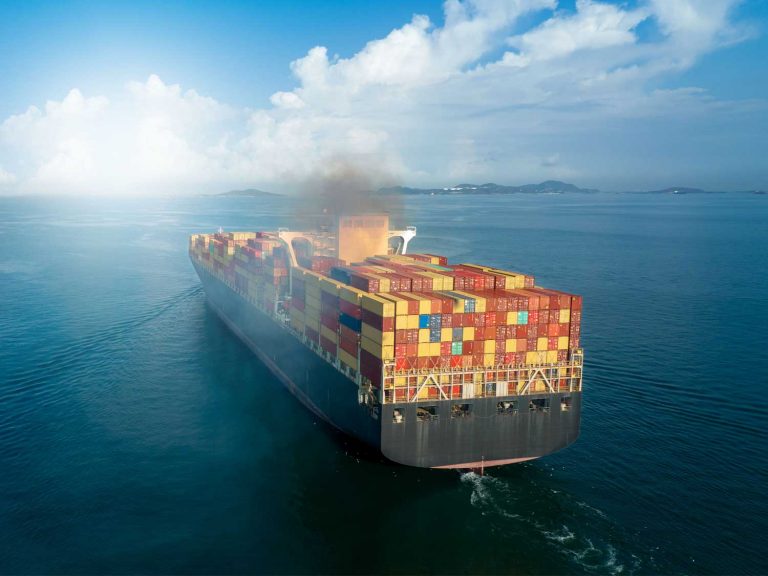
Date:
Sea freight ECO initiatives and their impact on shippers
Just months after IMO 2023 launched, the International Maritime Organisation raised its carbon emissions targets, which will require more carrier investment and with the EU rolling out its emissions trading scheme from next year, shipping lines will be looking to recover a lot of costs from shippers.
The revised IMO greenhouse gas strategy, adopted this summer, bought forward the target to reach net-zero GHG emissions “close to 2050” and will be achieved through mandatory reduction in carbon emissions for both new and existing ships, with clean or low-carbon fuel alternatives, and pressure growing to impose a carbon levy on international shipping, to fund climate mitigation.
The EU Emissions Trading System (ETS) is effective from the 1st January 2024, which means container shipping lines will need to purchase emission allowances while investing in alternative fuels. And with the lines looking at a potential ETS bill of €1bn in the first year, they will be looking to pass on the increased costs.
The European Union’s Monitoring, Reporting and Verification (EU MRV) regulation requires all ships exceeding 5,000 GT to collect and report data on CO2 emissions released to and from EU and EEA ports and will serve as the basis for shipping’s inclusion in the EU emissions trading system (ETS) from the 1st January 2024.
ETS is a ‘cap and trade’ scheme where a limit (the cap) is placed on the amount to emit specified pollutants and obliges individual shipping lines to hold an allowance for each tonne of CO2 or other carbon equivalent gases they emit.
There will be no set price list for these emission allowances – instead, the price will be defined by supply and demand on the market.
EU ETS is determined on vessels rather than cargo: docked at an EU port 100%; travelling between EU countries 100%; and between an EU port and a non-EU port 50%.
The UK has notified that they will be introducing a similar system, which would have an impact on UK domestic routes and UK-EU routes.
Total annual EU ETS-applicable emissions for the maritime industry amounted to 83.4m metric tonnes of CO2 equivalent which, at the current market value of €90 per emissions allowance (EUA), shipping emissions carried a total worth of €7.5bn for the year.
Taking into account the ETS phase-in period covering 40% of emissions in 2024, 70% in 2025 and 100% in 2026, the shipping industry could be liable for €3.1bn in 2024, €5.7bn in 2025 and €8.4bn in 2026. With container shipping potentially accounting for 30% of overall emissions, despite carrying less than 20% of seaborne trade (source: OECD).
Maersk has calculated potential Q1 2024 emissions surcharge (in EUR) per FFE @ 70 (Far East to North Europe) and 81 (North Europe to USA).
We are following ETS developments, the carriers adoption of cleaner fuel technology and any other initiatives which may offer cost and efficiency savings for our shippers.
Our MVT Eco module measures and monitors the emissions of every shipment, by every mode, with offsetting alternatives, so our customers can work towards carbon neutrality in their global supply chain.
The MVT Eco module is under continuous development, which could include adaptation to measure liabilities under the new EU ETS regime, if this is something we think may be useful to our customers.
To request an MVT Eco demo or to discuss any of the issues raised here, please EMAIL our CCO Andrew Smith.
